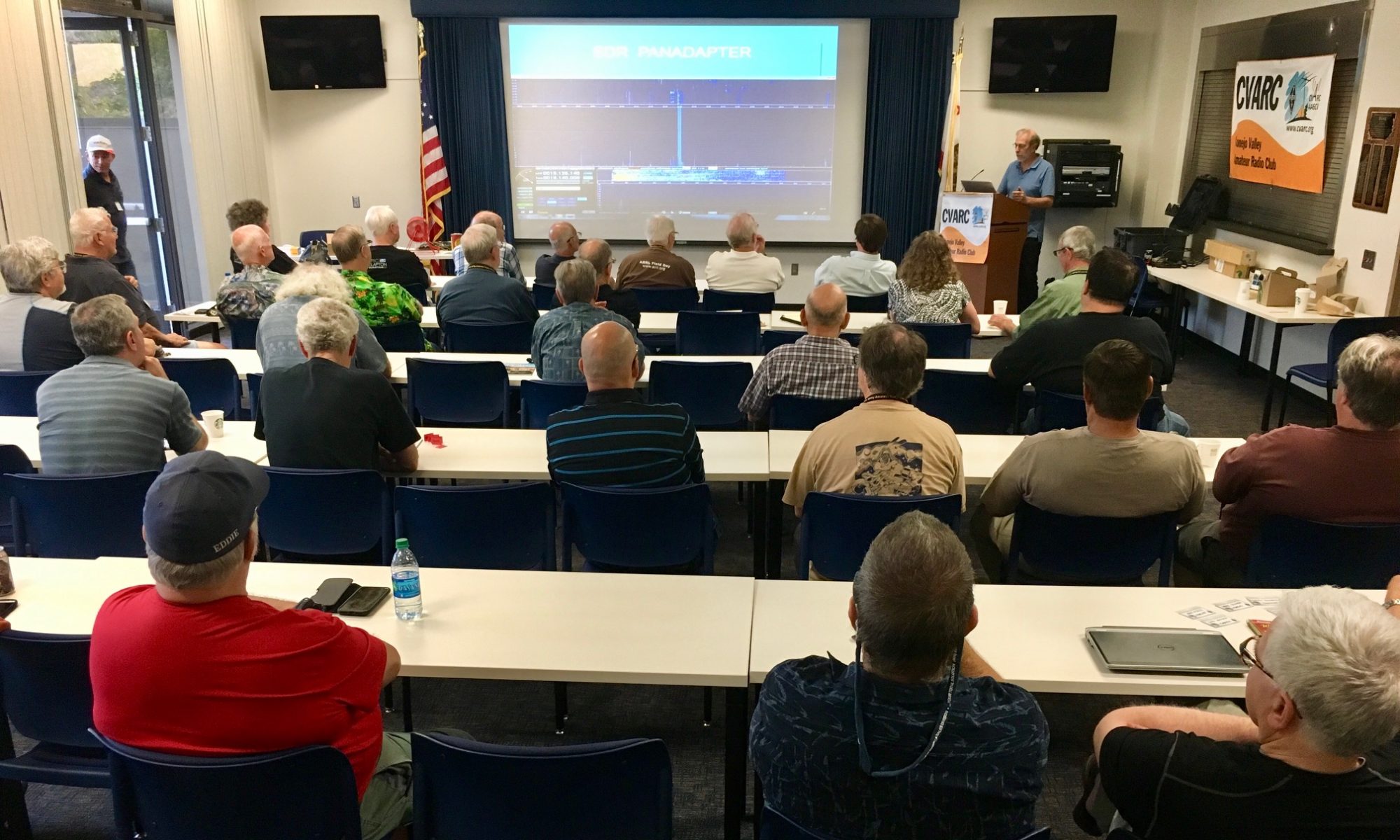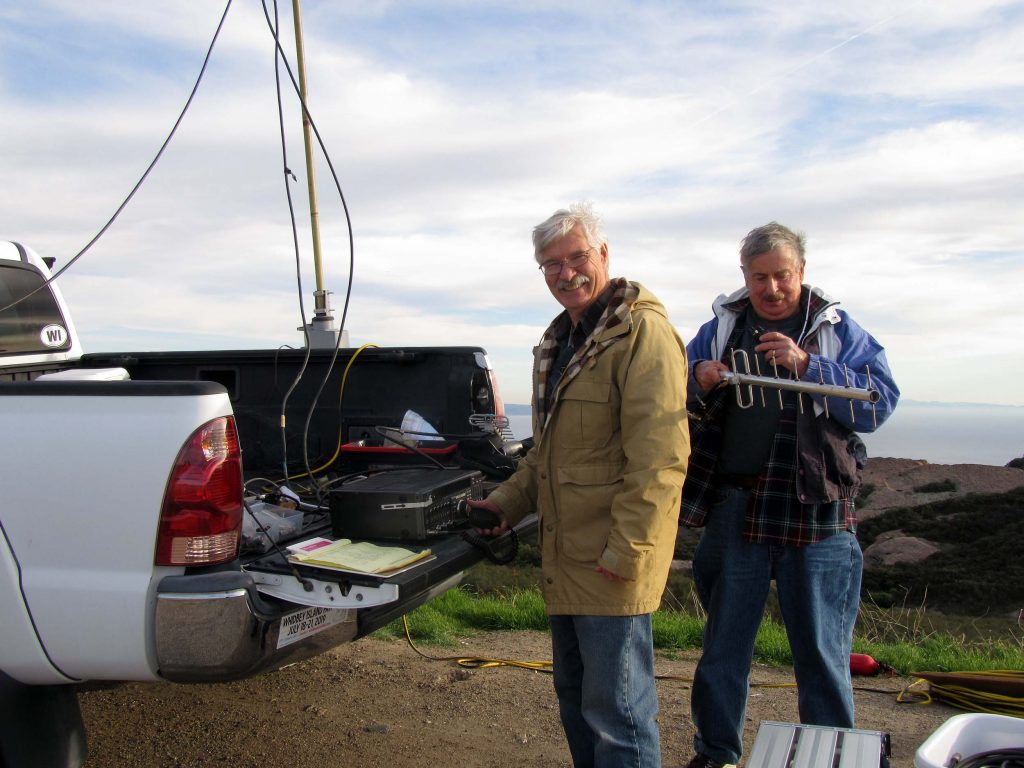
By Pete Heins-N6ZE
The ARRL January 2020 VHF Contest was held on January 18 – 19, 2020. N6ZE/R, operated by Pete Heins-N6ZE and Woodie Woodward-WA6WDY, made just over 250 QSOs on 6 bands from activating four Ventura and Los Angeles county grids. Our 7-hour stint at our Saturday location in the Santa Monica mountains (DM04qb) yielded 150 QSOs.
On Saturday, we noticed lots of activity with quite strong signals from the San Diego (DM12) area. We made 25 FM and SSB QSOs: three on 6 meters, 16 on 2 meters, one on 135 cm and 5 on 70 cm. Sixteen different unique callsigns were worked. I think that is the biggest turnout we have ever noted from DM12. Most, if not all contacts, were made with roof mounted verticals on the pickup truck.
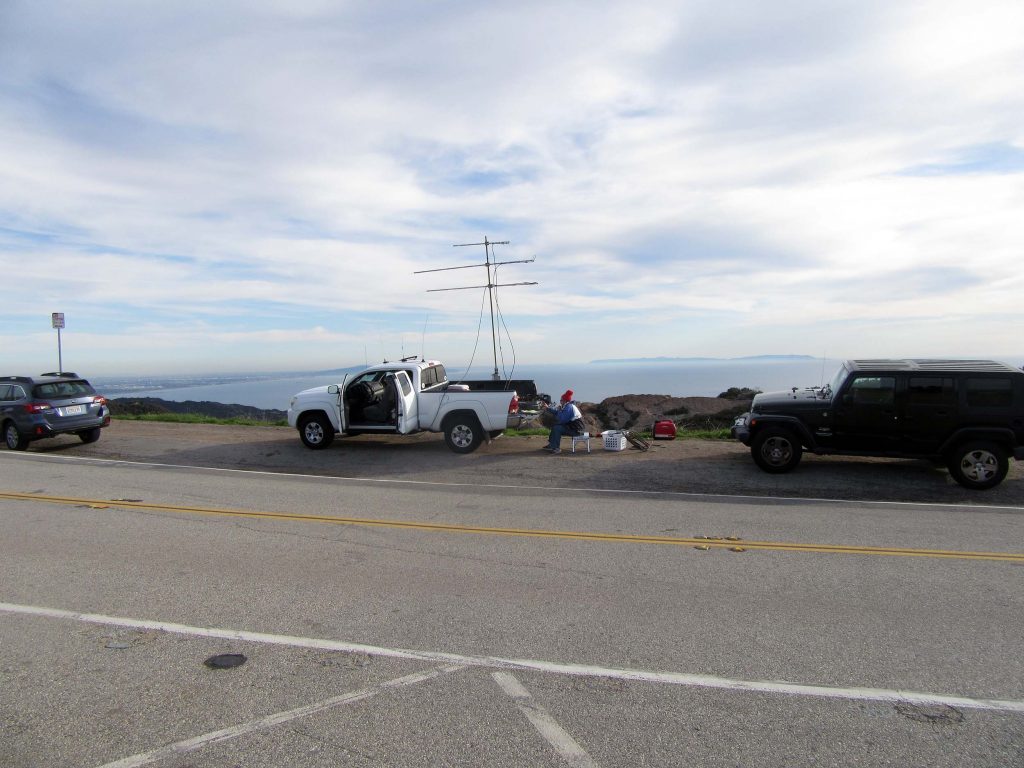
For most of Saturday, our location in the Santa Monica mountains experienced a cold Santa Ana wind. However, when looking southward, we could visually see light brownish color over the Santa Monica Bay. This typically indicates a temperature inversion. This was borne out by SkewT – log P plots provided to us after the contest by NWS Oxnard/LAX. There appeared to be a temperature inversion some 2800’ thick.

On Sunday, we activated DM14, DM13, DM03 and DM04. We did very little transmitting when in motion due to maintaining LA Freeway safety. While driving eastbound early in the morning at 65 mph, with very strong, gusty NE winds, we heard a very loud bang, but could see that nothing had blown out of the bed of the pickup. It turned out that the 6 meter mag-mount vertical had briefly encountered a gust of over 100 mph (65 mph ground speed plus 40 mph wind) which dislodged the mag mount and subsequently broke the magnetic bonding of the other 2 verticals. They all ended up in the bed of the truck. Phew!
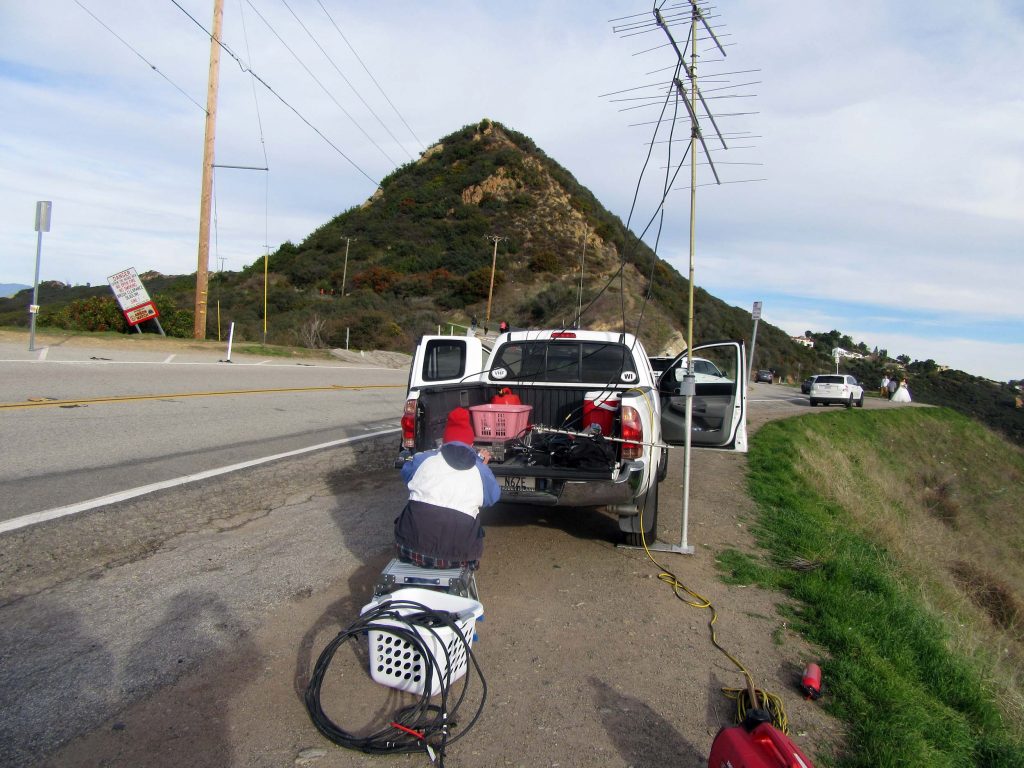
Despite the Topa Topa Mountain Range to our North, best DX for the weekend was with K6MYC. SSB contacts were made on 2m, 135cm and 70 cm at a distance of 217 statute miles.
In the words of WA6WDY, some of our roving station activity was akin to a monkey chasing a football. An FT857 mounted in the cab of the truck was used for 6 meter SSB, 2 meter FM, 2 meter SSB and 70 cm FM and some SSB. For 135 cm, a Kenwood TM331 was utilized. We used a ¼ wavelength vertical for 6 m, a small dual band 2m/70cm vertical and a ½ wavelength vertical for 135 cm. For long haul comms on 2 meters, 135 cm, 70 cm, and 23 cm we used an elderly barefoot FT-736 sitting on the tailgate of the pickup truck along with a rotor and small yagis for those bands. On 33 cm, we utilized an Alinco handheld with a hand-held yagi. Band changing speed varied from 10 seconds to a couple of minutes!
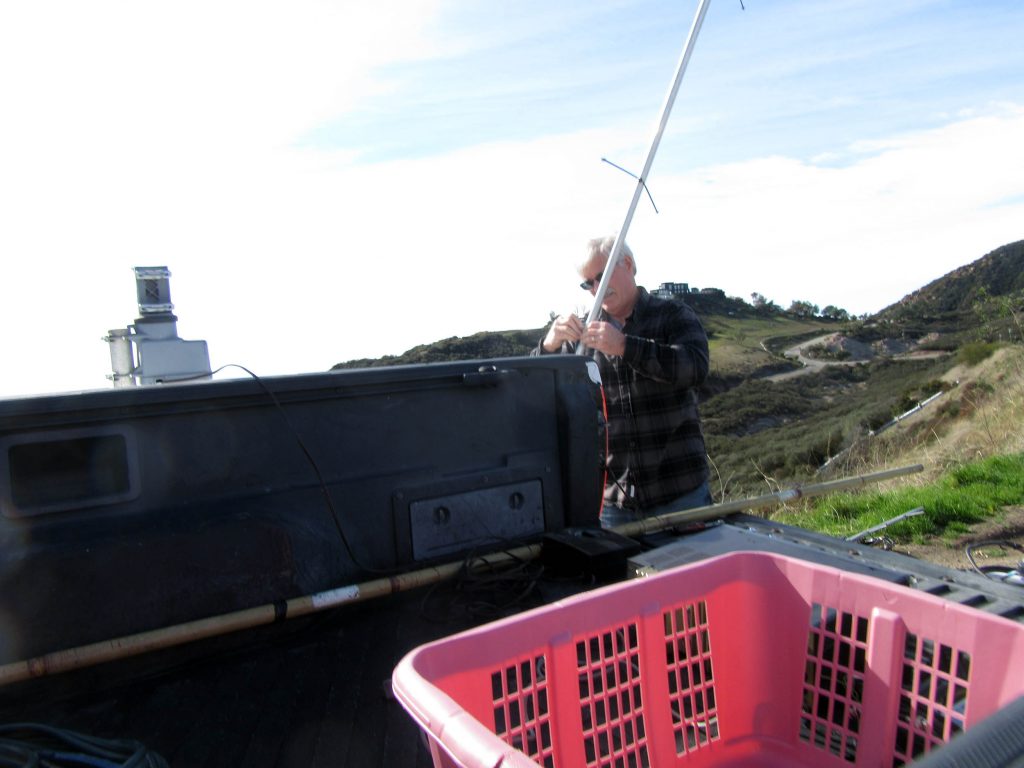
During the weekend, N6ZE/R had from 1 to 14 QSOs with 7 other Rovers who participated: N6GP/R, K6JEY/R, K6LMN/R, N6MI/R, KK6WLD/R, NQ6X/R and KM6ZJK/R.
Contacts were made with several members of Conejo Valley Amateur Radio Club, Ventura County Amateur Radio Society, and other non-club affiliated Ventura County Stations, including AG6AG, KM6ZJK, WA6EJO, N7WLC, AI6YR, NQ6X/R, AB6ET, W0UFC and AE6JR.
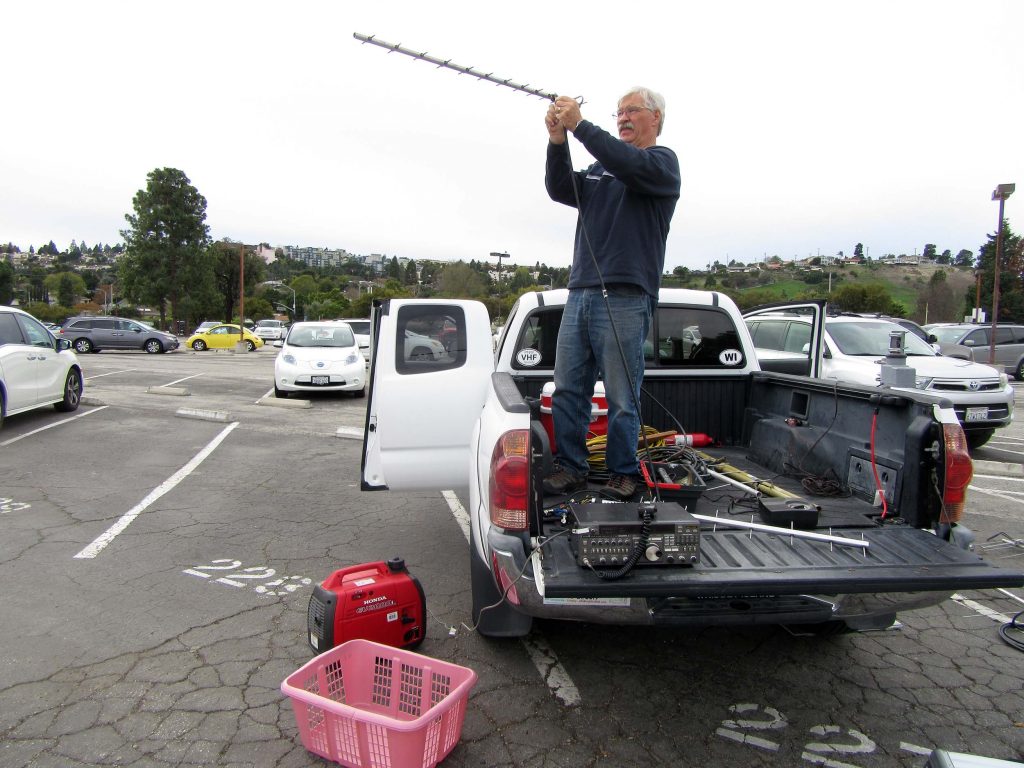
Please help to show evidence of ham radio operators’ utilization of our frequencies by submitting your contest info to the 3830 Contest Score Rumor Page. Also please submit your contest log to ARRL. The Cabrillo forms at cabforms are very easy to use:
Thanks to the ARRL for sponsoring the event and to those who participated this year.
bt73
Pete Heins, N6ZE@aol.com
LM-ARRL, PNWVHFS, CVARC, VCARS, Ventura Co-ACS
